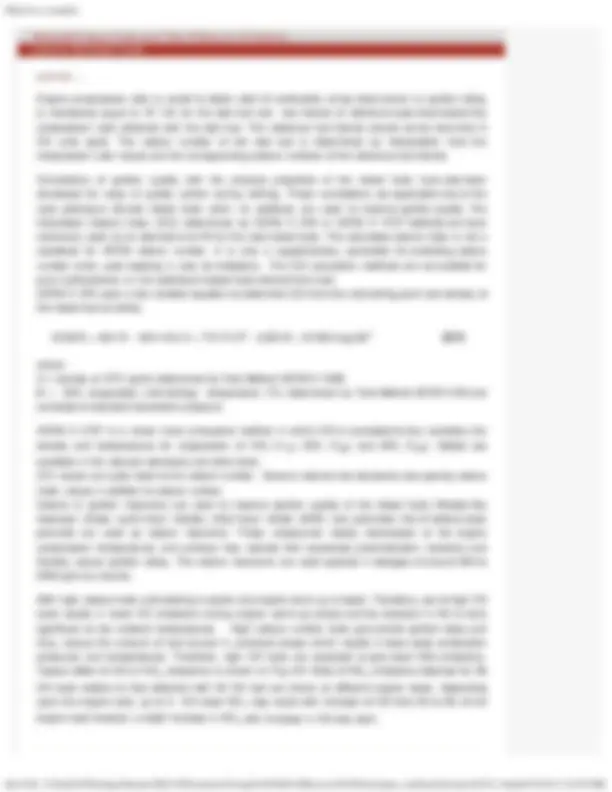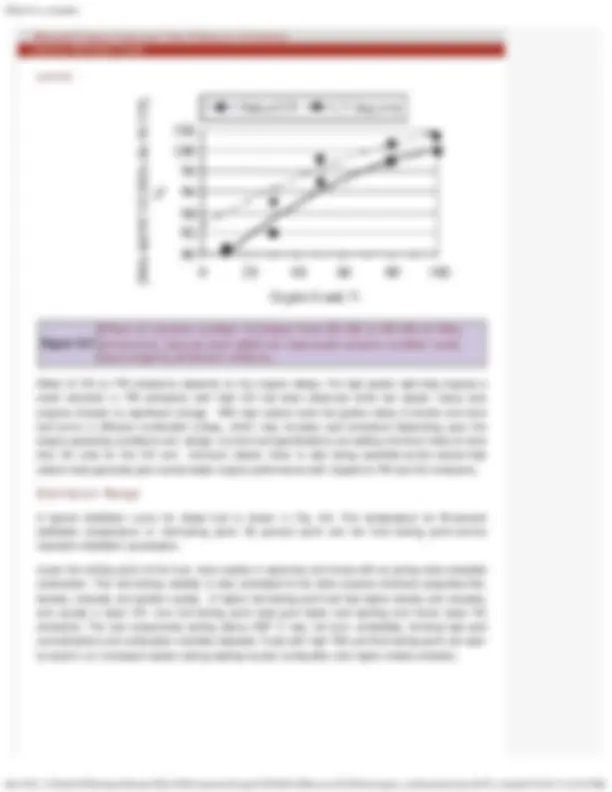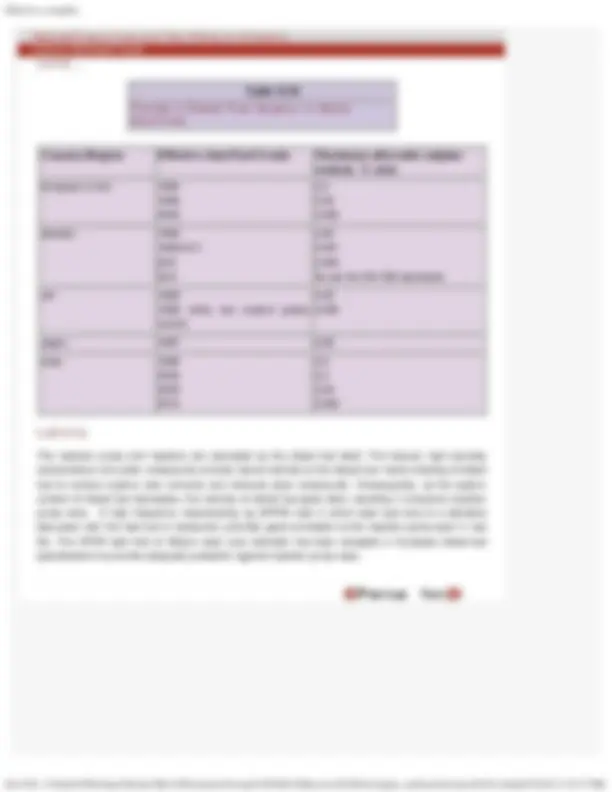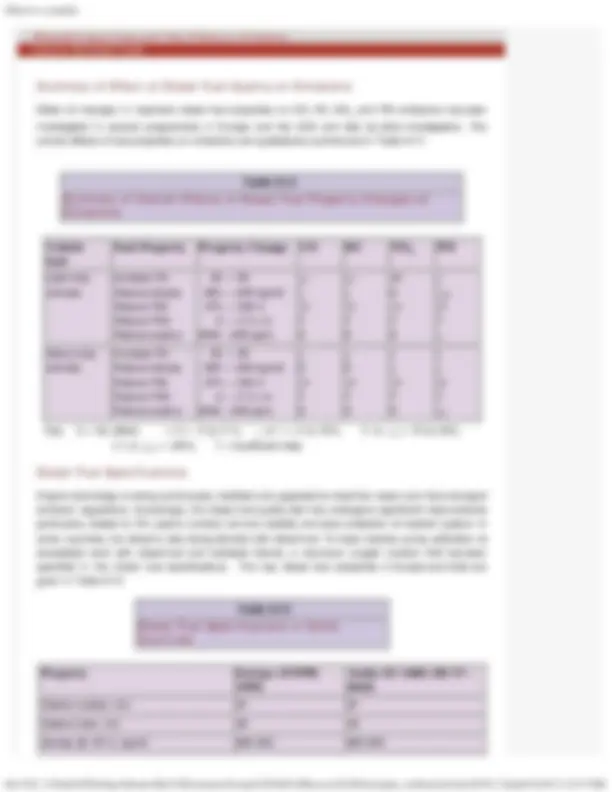








Study with the several resources on Docsity

Earn points by helping other students or get them with a premium plan


Prepare for your exams
Study with the several resources on Docsity

Earn points to download
Earn points by helping other students or get them with a premium plan
Community
Ask the community for help and clear up your study doubts
Discover the best universities in your country according to Docsity users
Free resources
Download our free guides on studying techniques, anxiety management strategies, and thesis advice from Docsity tutors
The major points are: Diesel Fuels, Ignition Quality, Distillation Range, Viscosity, Chemical Composition, Sulphur Content, Lubricity, Effect of Diesel Fuel Quality on Emissions, Prechamber Diesel Engine, Cetane Number, Engine Compression Ratio
Typology: Study notes
1 / 11

This page cannot be seen from the preview
Don't miss anything!







Diesel fuel is a mixture of a few hundred hydrocarbons derived from refining of crude petroleum. When petroleum prices were low, the diesel fuels were produced mostly by blending various refinery streams from the atmospheric distillation unit of petroleum refineries. To meet the increasing demand of the diesel fuels, products of secondary refinery processes like thermal and catalytic cracking, hydro-cracking, vis-breaking etc., also are used as blending components of the current diesel fuels. The diesel fuel streams evaporate generally in the temperature range of 150- 390º C. The key properties of the diesel fuel have already been given in Table 8.1. Besides these, other significant properties include cold flow characteristics at low ambient temperatures, water and sediment content etc. The important diesel fuel quality parameters are discussed below.
Ignition quality is a measure of ease of self-ignition of diesel fuel when the fuel is injected in hot compressed air in the engine cylinder. Cetane number (CN) is the most widely accepted measure of ignition quality as it is measured by a test on the engine. The cetane number scale is defined in terms of blends of two pure hydrocarbons used as reference fuels;
A high ignition quality hydrocarbon: n- Hexadecane or Cetane ( n-C 16 H 34 ) given CN = Another hydrocarbon with poor ignition quality: Hepta-methyl nonane (HMN) assigned CN =15.
The cetane number scale is given by:
Cetane number is measured in a standard single cylinder, variable compression ratio CFR engine according to ASTM D613 method. The test engine is a prechamber diesel engine. The test conditions are:
(i) Intake air temperature = 65.6° C,
(ii) Coolant temperature = 100° C,
(iii) Engine speed = 900 rpm,
(iv) Injection advance = 13° btdc.
Effect of CN on PM emissions depends on the engine design. For high speed, light duty engines a small reduction in PM emissions with high CN has been observed while low speed, heavy duty engines showed no significant change. With high cetane fuels the ignition delay is shorter and more fuel burns in diffusion combustion phase, which may increase soot emissions depending upon the engine operating conditions and design. Current fuel specifications are setting minimum limits of more than 50 units for the CN and minimum cetane index is also being specified as the natural high cetane fuels generally give overall better engine performance with respect to PM and HC emissions.
A typical distillation curve for diesel fuel is shown in Fig. 8.6. The temperature for 50 percent distillation temperature or mid-boiling point, 90 percent point and the final boiling point are the important distillation parameters.
Lower the boiling point of the fuel, more readily it vaporizes and mixes with air giving more complete combustion. The mid boiling volatility is also correlated to the other physico-chemical properties like, density, viscosity and ignition quality. A higher mid boiling point fuel has higher density and viscosity, and usually a lower CN. Low mid boiling point fuels give faster cold starting and hence lower HC emissions. The fuel components boiling above 350º C may not burn completely, forming high soot concentrations and combustion chamber deposits. Fuels with high T90 and final boiling point are seen to result in an increased injector coking leading to poor combustion and higher smoke emission.
The viscosity of diesel has a strong influence on fuel atomization, a high viscosity fuel resulting in larger fuel droplets. An increase in viscosity reduces spray cone angle and increases spray penetration. Low viscosity on the other hand, results in an increase in leakage of fuel past the pumping elements and loss of fuel system calibration. High viscosity of fuel is necessary for lubrication and protection of the injection equipment from wear.
Most fuel specifications limit kinematic viscosity of diesel fuel in the range 2.0 to 5.0 centistokes.
Olefins adversely affect oxidation and storage stability of diesel fuels. Poor fuel oxidation stability results in formation of gummy substances which cause plugging of fine fuel filters and sticking of injector needles. As the aromatic content of fuel increases, the particulate and PAH emissions increase. Fuels with high aromatic content have a lower natural cetane number and its consequent effect on combustion and emissions. Aromatics have higher flame temperatures and hence increase in aromatic content of fuel is expected to result in higher NO (^) x emissions. An increase in polycyclic aromatic content generally results in higher PM emissions..
The diesel fuel specifications in the USA, Europe and several other countries now limit aromatic content to 10 percent maximum. Also, limits on the poly-aromatic hydrocarbons are being specified. One side effect of reduction in aromatic content is reduction in lubricity characteristics of the diesel fuels causing durability problems of injection pump and injectors.
Sulphur on combustion produces sulphur dioxide (SO 2 ), of which about 1 to 3% is oxidized to sulphur trioxide (SO 3 ) and forms sulphates found in particulate emissions. The balance of SO (^2) is exhausted as gas. Typically, increase of 500 ppm in sulphur content contributes to about 0.01 g/kWh increase in diesel PM emissions. The sulphur trioxide on combining with water forms sulphuric acid that causes wear of engine cylinder liner and piston rings. Sulphur increases deposit formation in the combustion chamber and the deposits become harder in presence of sulphur. Fuel sulphur has deleterious effect on functioning of advanced after-treatment devices such as NO (^) x storage- reduction (NSR) catalysts, continuously regenerating diesel particulate traps (CRT) and catalyzed diesel particulate filters (CDPF). The sulphur dioxide and trioxide poison the catalyst. NSR catalysts require practically sulphur free (< 5 ppm) fuel. In CRT, conversion of NO to NO 2 ahead of CRT is reduced by sulphur as it poisons the catalyst. Sulphur lower than 30 ppm is necessary for functioning of CRT
In most countries during early 1990s, sulphur content of diesel fuel was in the range from 0.2 to 0.5%
(2000 to 5000 ppm) by mass. After the year 2000, a number of European countries made available the diesel fuels with less than 0.005% (50 ppm) sulphur. A large number of countries around the world have diesel fuels with sulphur below 0.05% for road vehicle application. Trends in diesel fuel sulphur content in some countries are given in Table 8.10.
Effect of changes in important diesel fuel properties on CO, HC, NO (^) x and PM emissions has been investigated in several programmes in Europe and the USA and also by other investigators. The overall effects of fuel properties on emissions are qualitatively summarized in Table 8.11.
Light-duty vehicles
Increase CN Reduce density Reduce T Reduce PAH Reduce sulphur
850 → 820 kg/m 370 → 330 C 6 → 3 % v/v 2000 →500 ppm
Heavy-duty vehicles
Increase CN Reduce density Reduce T Reduce PAH Reduce sulphur
850 → 820 kg/m 370 → 330 C 6 → 3 % v/v 2000 →500 ppm
Key: 0 = No effect; ± 0 = -2 to 2 %; ↓ or ↑ = 2 to 10%; ↑↑ or ↓↓ = 10 to 20%; ↑↑↑ or ↓↓↓ = >20%;? = Insufficient data
Engine technology is being continuously modified and upgraded to meet the newer and more stringent emission regulations. Accordingly, the diesel fuel quality also has undergone significant improvements particularly related to CN, sulphur content, tail end volatility and wear protection of injection system. In some countries, bio-diesel is also being blended with diesel fuel. To keep injection pump calibration at acceptable level with diesel-fuel and biodiesel blends, a maximum oxygen content limit has been specified in the Indian fuel specifications. The key diesel fuel properties in Europe and India are given in Table 8.12.
Cetane number, min. 51 51 Cetane index, min 46 46 Density @ 15º C, kg/m3 820-845 820-
Viscosity @40º C, mm2/s 2.0 -4.5 2.0-5.
Sulphur, %m/m, max. 0.035 BS III: 0. BS IV: 0.
Total aromatics, % m/m, max. -
Polyaromatics, (di+tri++), max. 11 11
Distillation:
% recovered at 250º C, max. 65 T 85, ºC, max. 350 T90, ºC, max./range - T95, ºC, max. 360 360 FBP, ºC /range - -
Flash Point, ºC, min. 55 35
Carbon residue, % m/m, max. 0.30 0.
Water content, mg/kg, max. 200 200
Oxidation stability g/m3, max. 25 25
Particulates, mg/l 24 -
Lubricity(HFRR scar dia. @ 60º C), μm 460 460
Oxygen content, % by mass max. - 0.